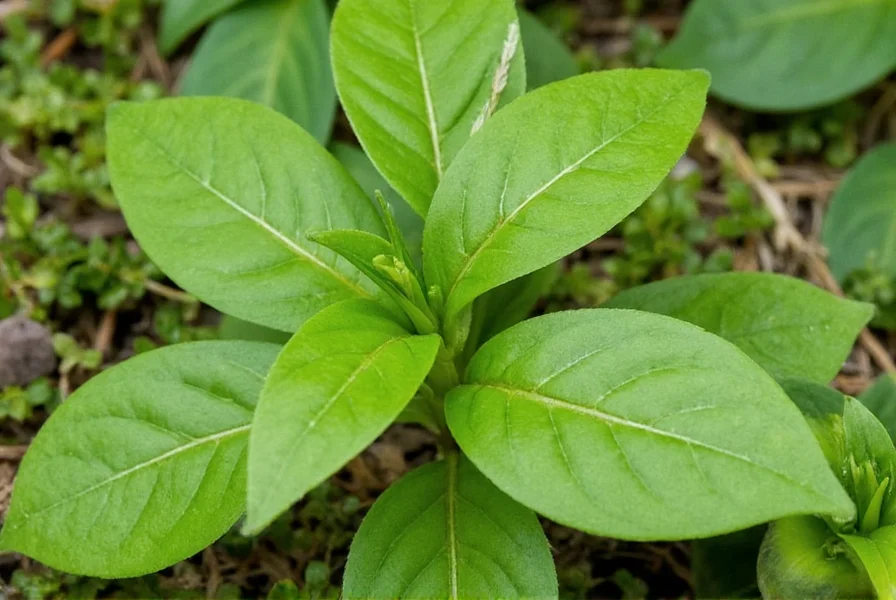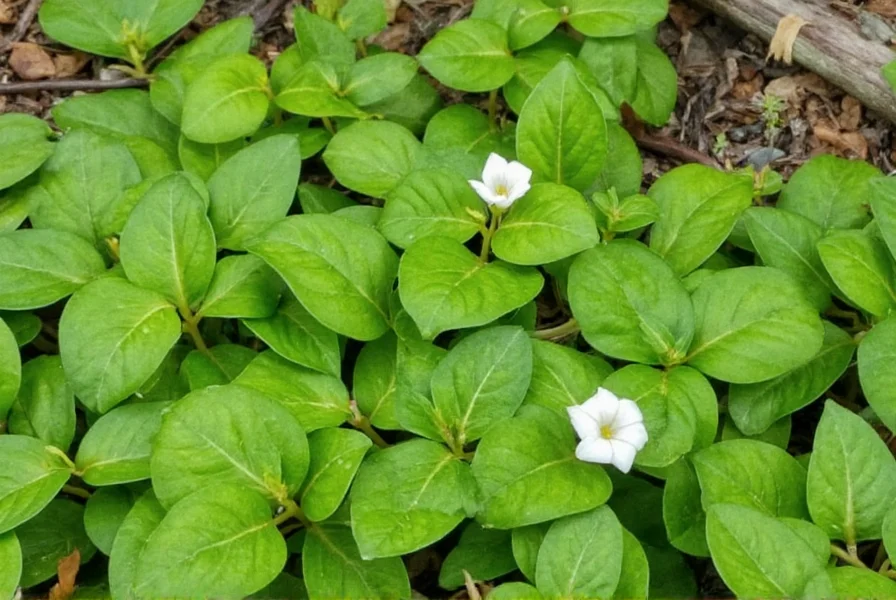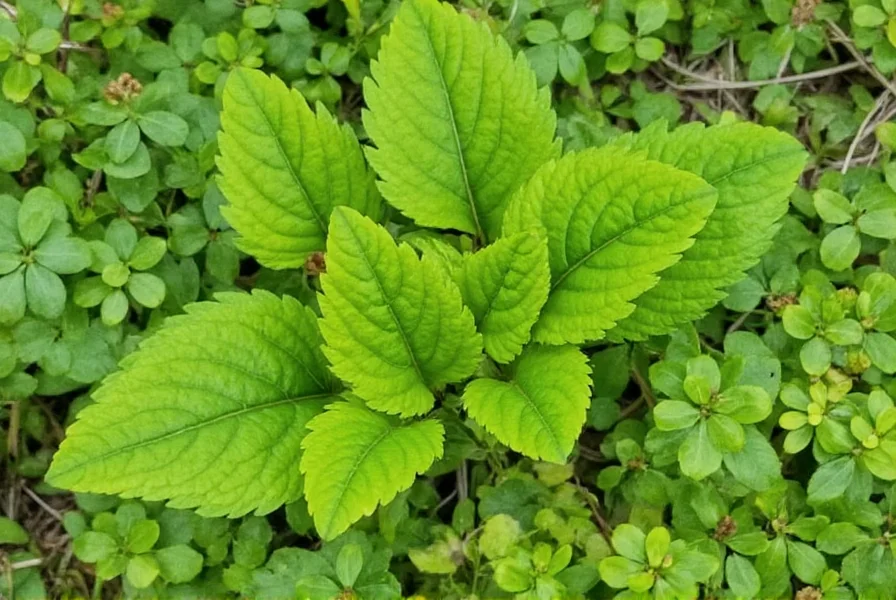For gardeners seeking reliable native ground covers, wild ginger Jamison offers exceptional performance in challenging shaded areas where many plants struggle. This specific cultivar stands out among wild ginger varieties for its adaptability and aesthetic appeal in woodland gardens. Unlike common wild ginger, Jamison exhibits noticeably larger foliage with a deep green hue that maintains color integrity throughout the growing season.
Botanical Characteristics of Wild Ginger Jamison
As a selected cultivar of Asarum canadense, wild ginger Jamison displays several distinguishing features that make it valuable for native landscaping. The plant typically reaches 6-8 inches in height with a spreading habit that forms dense colonies over time. Its velvety, kidney-shaped leaves measure 3-5 inches across—approximately 25% larger than standard wild ginger varieties.
One of wild ginger Jamison's most notable characteristics is its subtle marbling pattern on emerging leaves, which gradually deepens to a uniform forest green. The plant produces small, maroon-brown flowers close to the ground in early spring, though these are often hidden beneath the foliage. Like all wild ginger varieties, Jamison spreads through rhizomes rather than seeds, creating stable colonies without becoming invasive.

Growing Requirements for Optimal Performance
Successful cultivation of wild ginger Jamison depends on replicating its natural woodland habitat. This cultivar performs best in:
- Light: Dappled shade to full shade (avoid direct afternoon sun)
- Soil: Rich, moist but well-drained loam with high organic matter
- pH: Slightly acidic to neutral (5.5-7.0)
- Moisture: Consistently moist but not waterlogged conditions
Unlike many native plants, wild ginger Jamison demonstrates remarkable adaptability to varying moisture conditions once established. Gardeners report successful growth in areas with seasonal dry periods, though the plant performs best with consistent moisture. This cultivar's enhanced cold tolerance makes it suitable for northern gardens where standard wild ginger might struggle.
| Growing Condition | Wild Ginger Jamison | Standard Wild Ginger |
|---|---|---|
| Leaf Size | 3-5 inches | 2-4 inches |
| Cold Hardiness | USDA Zone 4 | USDA Zone 5 |
| Spread Rate | Moderate (12-18" annually) | Slow (6-12" annually) |
| Drought Tolerance | Good once established | Fair |
Landscape Applications and Companion Plants
Wild ginger Jamison excels as a living mulch in woodland gardens, effectively suppressing weeds while enhancing soil structure. Landscape designers increasingly recommend this cultivar for:
- Erosion control on shaded slopes and banks
- Understory planting beneath deciduous trees
- Native plant restoration projects
- Low-maintenance alternatives to traditional ground covers
When planning companion plantings for wild ginger Jamison, consider pairing with other native woodland species that share similar moisture requirements. Excellent companions include:
- Trillium species (Trillium grandiflorum, Trillium erectum)
- Virginia bluebells (Mertensia virginica)
- Native ferns (Polystichum acrostichoides, Athyrium filix-femina)
- Spring ephemerals (Erythronium americanum, Dicentra cucullaria)
Unlike invasive ground covers like English ivy or periwinkle, wild ginger Jamison provides effective coverage without threatening native ecosystems—a crucial consideration for environmentally conscious gardeners seeking sustainable landscaping solutions.
Propagation and Establishment Techniques
Establishing wild ginger Jamison requires patience but yields rewarding results. The most effective propagation methods include:
- Rhizome division: Divide established clumps in early spring or fall, ensuring each section has at least one growth node
- Transplanting: Space divisions 12-18 inches apart for quicker coverage
- Direct planting: Plant rhizomes horizontally 1-2 inches deep in prepared soil
For best results when establishing wild ginger Jamison, amend planting areas with 2-3 inches of leaf mold or well-rotted compost. Water thoroughly after planting and maintain consistent moisture during the first growing season. While this cultivar establishes more quickly than standard wild ginger, expect 2-3 years for full coverage in optimal conditions.

Common Challenges and Solutions
Wild ginger Jamison demonstrates excellent resistance to most pests and diseases, making it a low-maintenance native option. However, gardeners should watch for:
- Slugs and snails: These occasional pests can damage new growth. Control with organic slug bait or copper barriers.
- Dry soil conditions: During extended droughts, leaves may yellow and drop. Mulch heavily and provide supplemental water.
- Excessive sun exposure: Leads to leaf scorch. Relocate to shadier areas if this occurs.
Unlike many cultivated plants, wild ginger Jamison requires no fertilization when grown in appropriate woodland conditions. Over-fertilization can actually damage this sensitive native plant. The cultivar's natural resistance to deer browsing makes it particularly valuable in areas with high deer pressure—a significant advantage over many other shade-loving perennials.
Ecological Benefits of Wild Ginger Jamison
As a native plant cultivar, wild ginger Jamison supports local ecosystems in multiple ways. Its dense foliage provides essential ground cover that:
- Prevents soil erosion on shaded slopes
- Maintains soil moisture and temperature
- Creates habitat for beneficial insects and small wildlife
- Supports native pollinators through its early spring blooms
Research indicates that native ground covers like wild ginger Jamison contribute significantly to biodiversity in urban and suburban landscapes. Unlike non-native alternatives, this cultivar has co-evolved with local insect populations, supporting specialized relationships that maintain ecological balance. Gardeners using wild ginger Jamison in their landscapes actively participate in habitat restoration while enjoying its aesthetic benefits.
Frequently Asked Questions
Is wild ginger Jamison edible like common wild ginger?
While traditional Asarum canadense contains aristolochic acids that make it unsafe for consumption, wild ginger Jamison shares the same chemical composition. All parts of the plant should be considered non-edible. The name "ginger" refers only to the rhizome's aromatic quality, not culinary suitability.
How quickly does wild ginger Jamison spread compared to other ground covers?
Wild ginger Jamison spreads at a moderate pace, typically expanding 12-18 inches annually under ideal conditions. This makes it significantly faster than standard wild ginger but much slower than invasive alternatives like periwinkle. It takes approximately 2-3 years to form a dense ground cover when planted at recommended spacing.
Can wild ginger Jamison grow under black walnut trees?
Yes, wild ginger Jamison demonstrates good tolerance to juglone, the chemical produced by black walnut trees. This makes it one of the few native ground covers suitable for planting beneath black walnuts, where many other plants fail due to allelopathic effects.
Does wild ginger Jamison require special winter protection?
No, wild ginger Jamison is fully winter-hardy in its recommended zones (4-8). The foliage typically dies back with the first hard frost but returns reliably each spring. In extremely cold regions (zone 4), a light mulch of leaves provides adequate winter protection without smothering new growth.
How does wild ginger Jamison differ from European wild ginger (Asarum europaeum)?
Wild ginger Jamison (Asarum canadense 'Jamison') is a North American native with larger, softer leaves and a more vigorous growth habit than European wild ginger. Unlike the evergreen European variety, Jamison is deciduous. Most importantly, Jamison is non-invasive in North American ecosystems, while European wild ginger can become problematic in some regions.











 浙公网安备
33010002000092号
浙公网安备
33010002000092号 浙B2-20120091-4
浙B2-20120091-4